There are those whom the fates look favorably upon. The people who stroll through life blessed with love, happiness, and success. Marie Diderrich was one such person, enjoying a quiet, happy life in Wisconsin as a clerk and part-time athlete on the company basketball team. But success and greatness are two different things – sometimes you need a little nudge to jump from loved to beloved.
She was looking for a way out of her 9-to-5 Milwaukee life but needed a helping hand, and she found both in an unlikely source – boxing royalty looking to jump into promotion. But what happens when the gifts from the gods turn out to be tainted? If you are Marie Diderrich, you put your head down, barrel on, and become one of wrestling’s lost stars: Virginia Mercereau, women’s wrestling champion of the world.
This is the story of a young girl from Wisconsin who dared to dream big and found success in every endeavor she dared. This is the story of Virginia Mercereau, champion, hero, star, and survivor. (Part 2 is here: Virginia Mercerau Part 2: Champion, hero, star, survivor)
Part 1: The Rise (and Fall) of Virginia Mercerau
While the universe had great things in mind for young Marie, you wouldn’t have guessed it from her upbringing. Born Marie Nielen Diderrich on March 23, 1902, in the small city of Appleton, Wisconsin – nestled on the north shore of Lake Winnebago and not too far from Green Bay – Marie’s childhood and teen years were typical, uneventful, and completely unextraordinary.
Her father, William Diderrich, Sr., was a truck driver, and her mother, Harriette, was a homemaker, looking after the family’s three children, also including a sister, Jean (born in 1919), and an older brother, Harry, born a year before Marie, in 1901. And while both parents were German by birth, the upbringing of the children was thoroughly American. Marie was a popular student at Appleton High School who excelled in sports, and there were hints about the colorful future ahead.
“I’ve liked sports since I was young,” Diderrich told the Greensboro Record in 1924. “I was always something of a tomboy as I played with the boys as a little girl. The other girls wouldn’t play with me; I guess I was too rough.”
Life for the young woman continued to evolve in a typical manner after high school, with Marie moving to Milwaukee and working as a clerk (listed as a stenographer) in a downtown department store. Life in the city proved pleasing – especially when she joined the store’s women’s basketball team. She proved herself a fast, strong forward, eventually graduating to play for the semi-pro Milwaukee Five, as she told the local papers soon after her sudden rise.
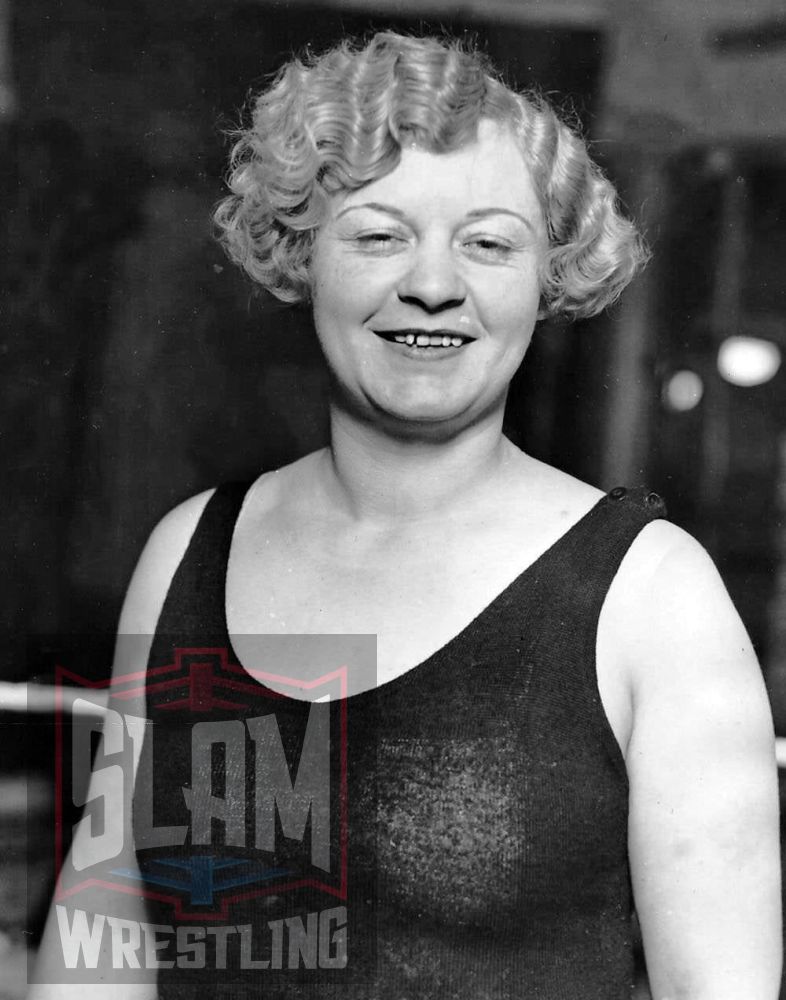
Virginia Mercereau. Photo courtesy Chris Swisher
“It’s not necessary for every young woman to become a wrestler, but anyone interested in physical development should take up that branch of sport,” Diderrich told the Milwaukee Sentinel on November 15, 1923.
“From my days in Appleton, I have been fond of athletics, and it was not so many years ago that I was playing forward on a Milwaukee star basketball team. I had the luck to make good and won a place on the Milwaukee Five, one of the fastest semi-pro teams in the west.
“Wrestling, a part of our training exercises, appealed to me, and I went for it, eventually winning the western championship. Now I’m going to take the world’s title back to good old Milwaukee,” she concluded.
Just how – and when – Diderrich turned to pro wrestling is unknown, with the only note of her entry into the business coming from a party announcement in the Appleton Post Crescent. The party, hosted by her brother at his home at 300 South River Street, just down the street from the family home, provided a rousing send-off for young Marie, who was apparently heading to Boston – Paul Bowser territory – for a meeting with the “eastern champ” and the Marie going by a new name, Virginia Mercerau. Even more confusing, she claimed a title – either the “lady wrestling champion of the West” or of the United States.
How did all this success spring up from seemingly nowhere? It was all thanks to a man who would provide pivotal not just in the career of Virginia Mercerau but the life of Marie Diderrich, too – Al Ketchel.
Prince of Ring
So, who the hell is Al Ketchel?
Well, essentially, he was boxing royalty. Albert was the brother of the famed Stanley Ketchel, the “Michigan Assassin” and former middleweight champion of the world. Stanley had an impressive record of 53 wins in his career, with 50 coming by way of knockout.
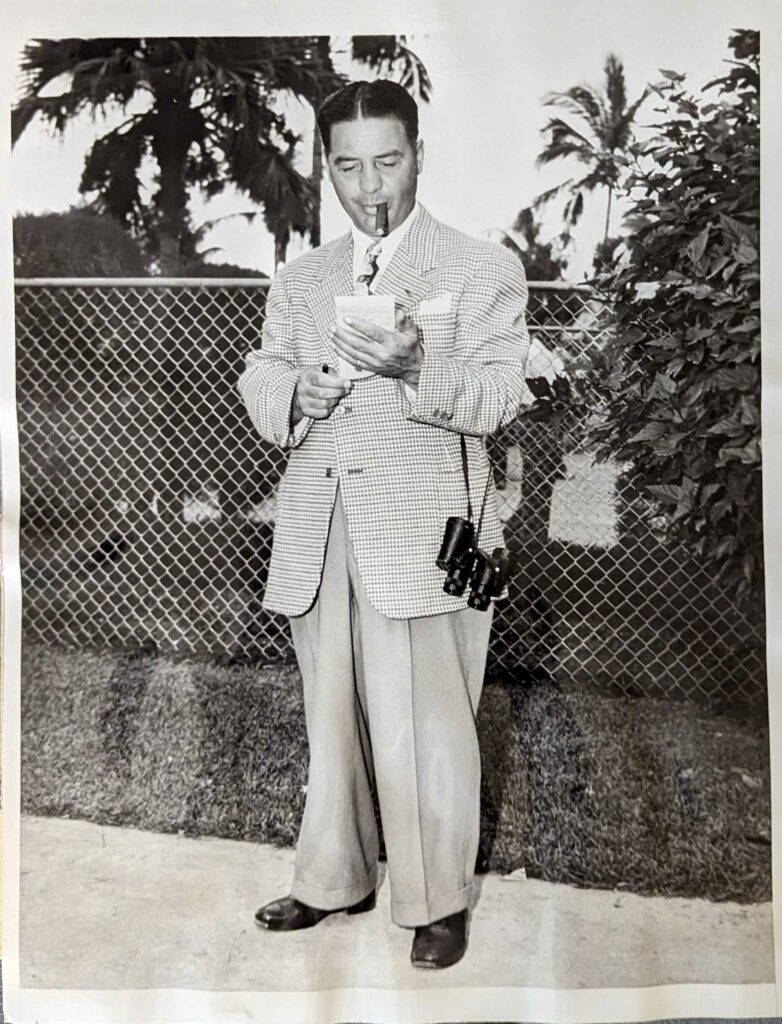
Al Ketchel at his favorite pastime: horse racing.
“Stanley Ketchel was one of the all-time greats,” said historian and author Bert Randolph Sugar. “At the turn of the last century, he was probably the equal of every fighter of that era, except Jack Johnson, and probably the equal of all athletes in popularity, except for (baseball players) Ty Cobb and Honus Wagner. That’s how big he was.”
With that power and success, Stanley Ketchel became very wealthy, purchasing a farmstead in rural Missouri – and it was on that farm, he was murdered in cold blood on October 15, 1910, presumably over a love tryst.
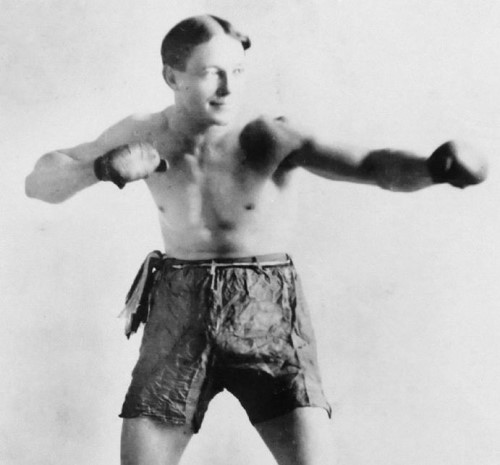
Stanley Ketchel, wearing what appears to be paper trunks.
Al, for his part, was no pushover. A prominent lightweight fighter, Al Ketchel won the Connecticut state title numerous times and was a popular draw in his adopted Bridgeport, Connecticut, throughout the 1910s. This success, combined with his late brother’s estate, gave Al Ketchel a potent mix of reputation, connections – and cold, hard cash.
Ketchel was brash, handsome, charming, and mired with many of the vices you’d expect from a young, rich fighter. Ketchel liked two things in particular: fast horses and equally fast women. A playboy at heart, the younger Ketchel owned several thoroughbreds, which he liked to watch race in South Florida as he lived life to the fullest.
But why was a star boxer turning towards the management of wrestlers – and a woman wrestler at that?
There are some reasons. First, boxers can’t box forever. Time is the unified, undefeated champion in the ring, and, at 32, Ketchel was old. Finding his next path and attaching himself to a unique act could help open doors that his boxing connections couldn’t.
An October 27, 1919, edition of the Bridgeport Times & Evening Farmer saw Ketchel’s new manager, Benny Murphy, candidly discuss the prospects of the aging fighter:
“Al has placed himself under my management again; I am sure he is 50 percent. The boxer he was several years back, he can make good with the present crop of lightweights,” he told the paper, adding that his fighter was scheduled for two grueling matches to help establish his place back on the pugilistic perch. “This will prove to the Bridgeport fans that Ketchel is still a card throughout New England.”
But even if his manager had faith, it was clear that Al Ketchel’s in-ring days were numbered. And, like his brother, it would only be natural for the aging Al to try his hand at promotions.
Since his family held property in the Midwest, it’s not illogical that a spontaneous gym meeting between a pugilist and a basketball might occur. Adding more plausibility, Marie had originally hoped to be a boxer herself, but as she noted, “I got hit on the nose and didn’t like that, so I gave boxing up.”
The second reason Ketchel managed Mercerau was revealed when the two were first introduced in the same party notice: they were married. “Al Ketchel, brother of the Great Stanley,” was how the local press noted his arrival and the business nature of their relationship.
Coming for Cora
A confusing aspect of Mercerau’s early career is when and where it started. We are left with a mystery, wondering how a wrestling novice could quickly make the jump to the pros – and attain a claim for any title, let alone the “world” or “western” belts. What is for certain, though, was that by the fall of 1923, Mercerau was in full charge and had her eyes set on the reigning women’s champion (and a women’s wrestling hall-of-famer) Cora Livingston. While huge swathes of Virginia Mercerau’s early career are likely lost to time, names of some of the women she defeated on her rise to the women’s crown included Hazel Kinnard, May Kelly, and another name she would have to tackle to prove her credentials to Livingston: Bobbi Miller.
While the arrival of a contender to Livingston’s throne was a surprise, the people of Boston quickly warmed to Mercerau, the new foe. The Milwaukee Sentinel noted, “New Englanders, skeptical at first of the claims of this quiet, unassuming Wisconsin girl, now appreciate her remarkable work.”
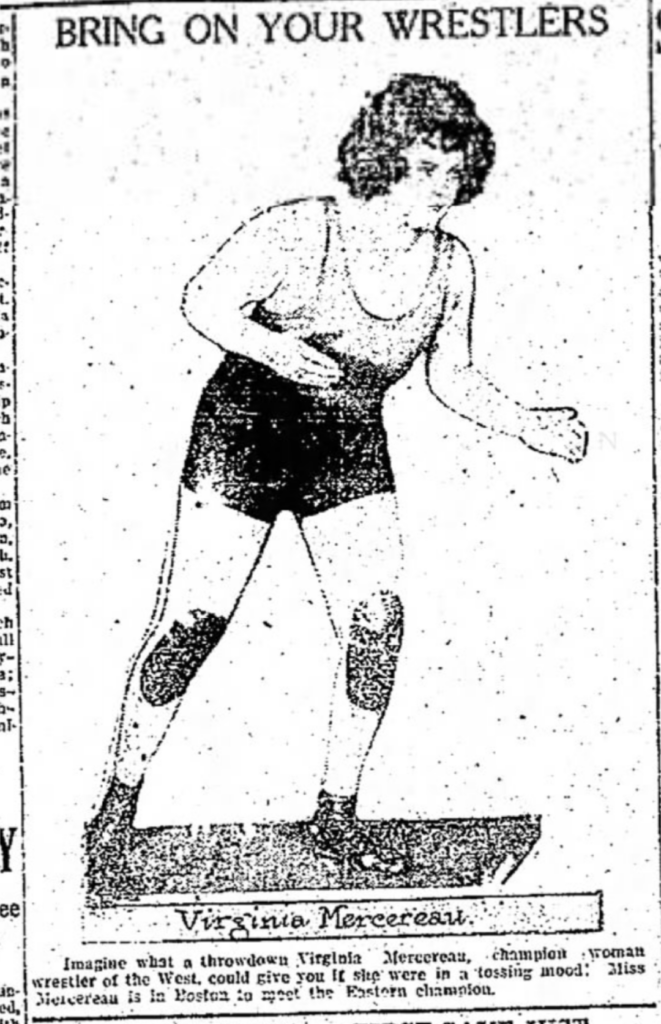
The Bostonians liked Mercerau’s feminine nature – starkly contrasting Bobbi Miller’s more masculine nature. She wore tailored, frilly clothes and sported an aviator’s cap to protect her ears from cauliflower. She was friendly, approachable, engaging – and tough. Also, she was a technically skilled wrestler who wasn’t afraid to use her five-foot-six, 160-pound frame to her advantage. One of her favored moves was a vicious headlock, which she claimed she had picked up from another Wisconsin native – Ed “Strangler” Lewis.
Part of that appreciation came from a victory against Bobbi Miller on a Paul Bowser card at the Grand Opera House in Boston on November 17, 1924. But now the “lady champion of the west” was set to tangle with the eastern champion – the legendary Cora Livingston.
The long-awaited showdown with Livingstone finally occurred on Thursday, November 23, 1923. But almost as soon as it began, it ended.
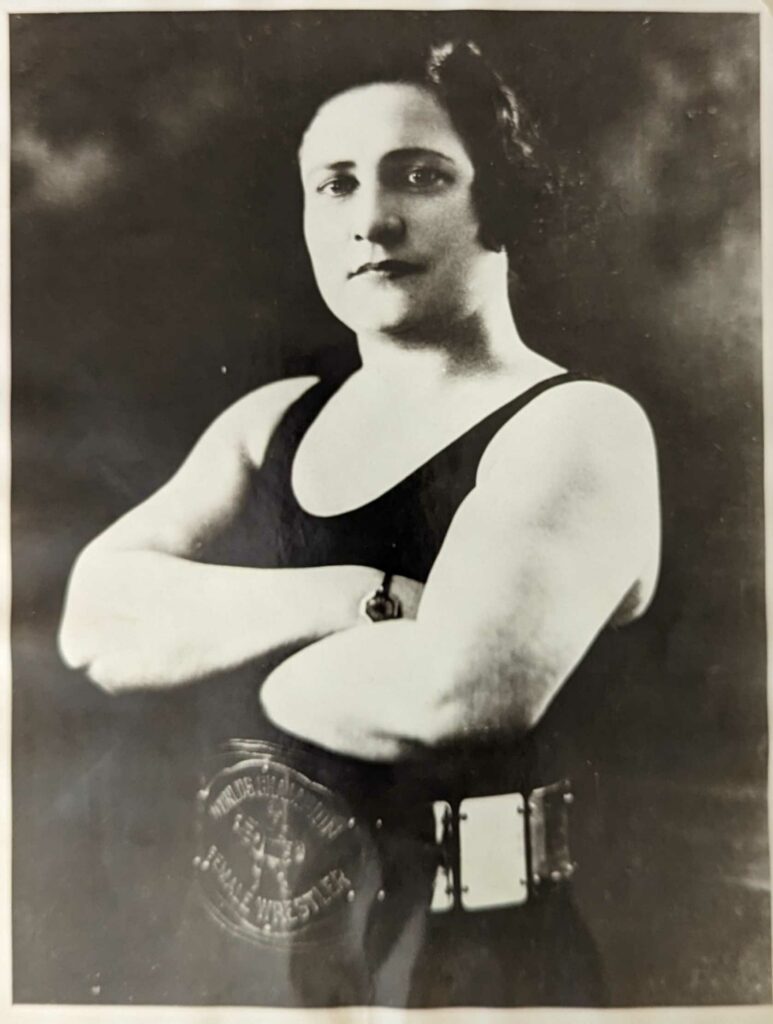
Cora Livingston is the world champion claimant and the wife of Boston promoter Paul Bowser.
According to the Boston Globe, the match ended in just 10 minutes, with Mercereau losing the fall to a hip toss. But the story appears murkier than a simple pinfall. According to Ketchel and Mercereau, Livingstone bolted, intimidated by her younger rival. Instead of splitting a fall a piece and angling for a third-fall draw, Livingstone won the first fall and simply never returned to the ring, her husband later declaring that the bout was always one fall only.
Whatever the real circumstances were is impossible to know – especially since the coverage in the press was minimal. But whatever the true result, the outcome was the same: Cora Livingstone retained her claim to the world women’s championship, and Mercereau was now staking her claim as middleweight women’s champion.
Virginia Mercerau, Wrestling Attraction
If the sketchy circumstances of the Livingston bout were designed to deter Ketchel and Mercereau, it backfired. Instead, the couple doubled down and pushed ahead with promotional plans in an unusual spot: Norfolk, Virginia.
The Portsmouth Star of January 11, 1924, announced an exciting return of wrestling to the area, with Ketchel, a “well-known wrestling promoter,” attempting to reinvigorate the local scene. The first card, held on January 14 at Pickwick Hall, featured a main event of Eddie Spencer of Omaha versus Martin Ludecke, a German middleweight and Jack Curley grappler who was currently claiming the championship of Central America. Mercerau, supposedly his star, was sidelined, only being introduced to the crowd at ringside.
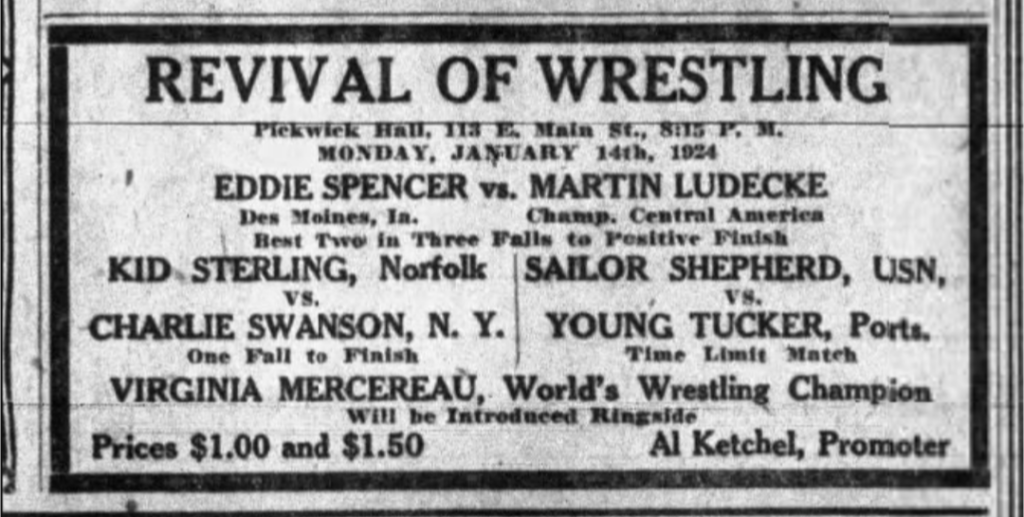
Al Ketchel tries to revive wrestling in Virginia in January 1924.
Despite the best attempts of Ketchel, the Virginia experiment was a disaster. Worse, locally, it was difficult – if not impossible – to get Mercerau, an opponent that she was relegated to guest referee positions or simply announced to the crowd as a notable dignitary. Ketchel’s hair-brained promotional skills had sidelined his wife, the very person he was theoretically there to help.
That’s not to say she didn’t wrestle – just that records are scant for several of the supposed bouts. The Greensboro Record, in Greensboro, North Carolina, noted on February 18 that Ketchel had sent a wire noting that Mercerau would be heading to the city and that she had recently defeated a “Sailor Beaufort, champion of the naval base, Norfolk.” In fact, her display against Sailor Beaufort was so strong that she left the seaman with fractured ribs from her devastating body vice hold.
The Danville, Virginia, press is equally gracious in stating that Mercerau had “wrestled some twenty male grapplers” and noting some of Mercerau’s recent opponents, Joe Shimkus and star grappler John Kilonis of Manchester, New Hampshire. However, when (or if) these bouts occurred is unknown.
But again, Mercerau and Ketchel struggled to find opponents south of the Mason-Dixon line. Her much-hyped appearance in Greensboro was an open challenge. Fortunately, travel issues got in the way in Roanoke, and Mercerau could not make the date, with her debut pushed back a week.
There were bouts, including one against “The Terrible Swede” Jack Sendsten (a 30-minute draw in which the Swede was a last-minute replacement for Teddy Betz, a Greek middleweight who did show the date), with Mercerau being heralded as a draw with the local crowd thanks to an attendance of some 600.
Even Sendsten approved of Mercerau’s credentials, stating in one of those funny accents that press people love: “I hane vera much surprised; you har seen me wrestle before and I haf win mosta my match. I bane surprise a woman beat me.”
The Betz no-show soon became her first real angle, with the cocky Greek stating that he could “throw the woman every five minutes,” though he was proven wrong with a 15-minute draw on March 6, 1924, the best he could muster against Mercerau.
As she ran out of opponents, North Carolina promoters Woodell and Huffins sought to arrange a rematch between Livingston and Mercerau, this time to a finish. Unsurprisingly, however, Livingston, who clearly thought she had finished Mercerau some six months previous, declined. But this only helped to reinforce the myth of the title victory in Boston.
A Wager Worth Fighting for
Around this time, Mercerau began offering a standing wager, backed by Ketchel and (later) advertised by the popular Police Gazette tabloid.
The standing offer stated that any man in the United States, up to 160 pounds, would win $150 if they could throw Mercerau in 15 minutes. This offer only applied to the first fall, and there would be no cash rewards for throws after that 15-minute period elapsed – a bit like the old television titles of yesteryear.
When the wrestler’s weight was slightly over Mercerau’s, amendments would be made to the purse. For example, in a clash with George Volkert in Madison on July 13, 1925, the pot was reduced to $100, given his 175-pound weight versus Mercerau’s 160 pounds.
While the concept of a $150 bounty might sound quaint, it was a decent chunk of change in 1925 (valued around USD $2,500 or so in modern monies). Additionally, it helped add an interesting wrinkle to the Mercerau character. Local wrestlers and international stars would line up in this interactive element to prove they were tougher than a girl.
Barnstormers
The middle part of 1924 saw the couple tour the Midwest (and, supposedly, the Pacific Northwest), with Mercerau taking on numerous intergender challengers. One opponent we can pinpoint is Frank Martin, a local grappler whom she lost to on May 13, 1924, in Sturgeon Bay, Wisconsin. Mercerau had more than held her own, however, lasting 24 minutes in the first and 14 in the second and final fall. Similarly, Joe McGee, a Shellsburg, Wisconsin heavyweight, took two falls from Mercerau on August 20, 1924 – but only after the 15 minutes had elapsed.
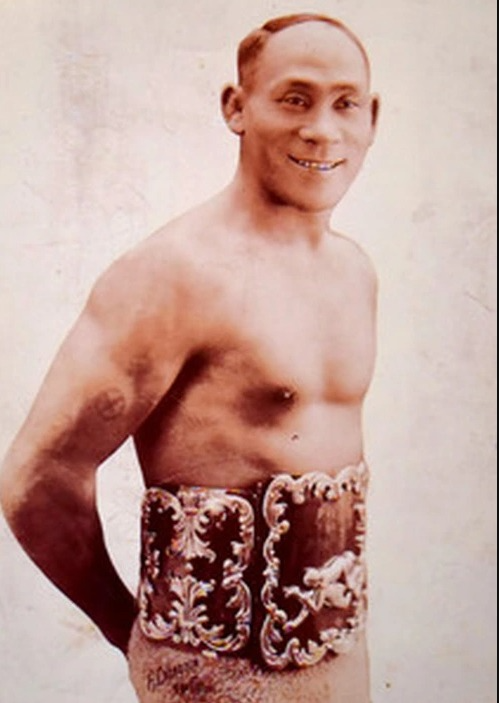
Matty Matsuda and his amazing championship belt.
Another name that relished the challenge of facing Mercerau was Manjiro Matsuda, a Japanese-born Jujitsu and professional wrestler and holder of the World Middleweight Championship, who also defeated Mercerau but failed to gain the wager, taking 23 minutes for the first and 13 minutes for the second fall.
Matches like the Matsuda contest were supposed to be the new pinnacle of Mercerau’s career, capturing headlines across her home state and showcasing her impressive success to friends and family. The tough slog of 1924 was nearly over and bearing fruit.
But the trajectory of Mercerau’s career changed abruptly on Tuesday, September 2, 1924 — and not just her career but her entire life. It was on that day the shoe finally dropped, and Al Ketchel’s shortcomings as a manager, publicist, and husband were laid bare.
The Champ & Her Chump
There’s a great bit in the Futurama episode “A Leela of Her Own” where Leela begs to be allowed to pitch in a blurnsball game, hoping to become the first female player in the sport’s history. She mentions to the New New York Mets manager that she learned from Hank Aaron (Hank Aaron XXIV, to be precise), to which the manager replies, “You were trained by the Hank Aaron?!” Leela’s retort, “I was trained by a Hank Aaron,” would be apropos for this story because, you see, Marie Diderrich had married an Al Ketchel – and not the real deal.
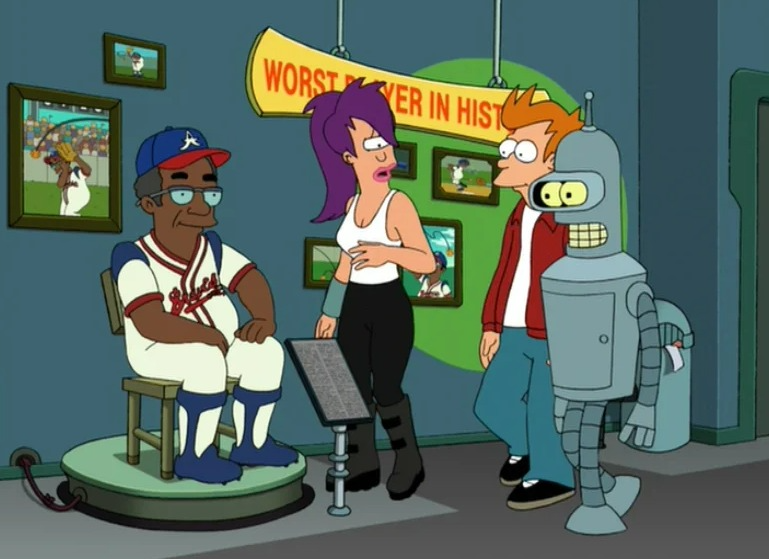
Marie, her family, and seemingly all experts from the Midwest to the Atlantic seaboard had accepted Mercerau’s manager at face value. It provided her access she might not otherwise have had. It got her into Boston and paired her against the biggest women’s star of the period, Cora Livingston. But it had destroyed her feeling of innocence and tarnished her sterling reputation amongst the people of Appleton.
So, who did she marry anyway? That’s difficult to say because newspaper records for “Leroy Bringham,” the name the police provided, are scant in Wisconsin – where he was wanted for larceny and grand theft auto. Bringham, a local conman, had purchased an Overland sedan from a dealership in Milwaukee in 1922 but failed to make payments and fled the state with the card in 1922.
Under his “Ketchel” alias, Bringham was finally captured on the evening of Mercereau’s match with Joe Parelli, a local middleweight champion of some 158 pounds at the Manitowoc Veterans of Foreign Wars Hall. Mercerau was defeated in straight falls, but the first fall had taken 38 minutes, meaning she retained her unbeaten streak.
The phony Ketchel had been traveling through Appleton before being spotted on College Avenue, driving another vehicle. Detective Ryan, spotting the now fleeing Bringham, jumped onto the car’s running board and steered it towards the curb – stopping it and the criminal. The conman spent the night in jail, while Marie returned home to a community willing to close ranks to protect its own.
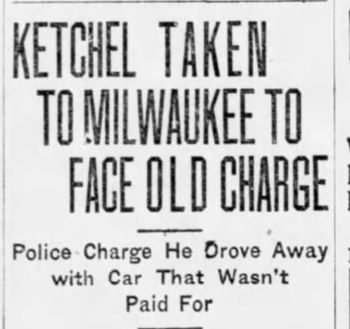
Leroy Bringham, an Al Ketchel impersonator, is arrested in Appleton.
The Fall of Virginia Mercereau
The marriage (if it existed) was declared dissolved, and the managerial contract was torn up. Diderrich was devastated but attempted to soldier on, hitching her wagon to the management of John “Doc” Krone, Chicago’s longest-tenured promoter, and announcing an eventual move to the Windy City.
But the move never seems to have occurred. While Krone made efforts to publicize the now Police Gazette-backed purse, Mercerau faded from public view – the prospect of upcoming matches being floated but never finalized.
At the same time, she found herself with a new, in-state female rival in the form of Nellie Downs from Eau Claire. While Downs was only 140 pounds, some 20 less than Mercerau, she declared herself willing to meet a woman of any size while simultaneously billing herself as the very impressive sounding “lady champion all-around athlete.”
Life can come at you fast. And when it hits you, smash in the face, it’s tough to know how you’ll react. Faced with a fraudulent marriage and a new, young upstart, Marie Diderrich retreated to the safety of her former life, free from conmen, double-crosses, and meager existence.
But neither Marie Diderrich nor Virginia Mercerau was defeated – she just needed time to dust herself off.
TOP PHOTOS: Virginia Mercerau. Courtesy of the Collection of Chris Swisher
PART 2
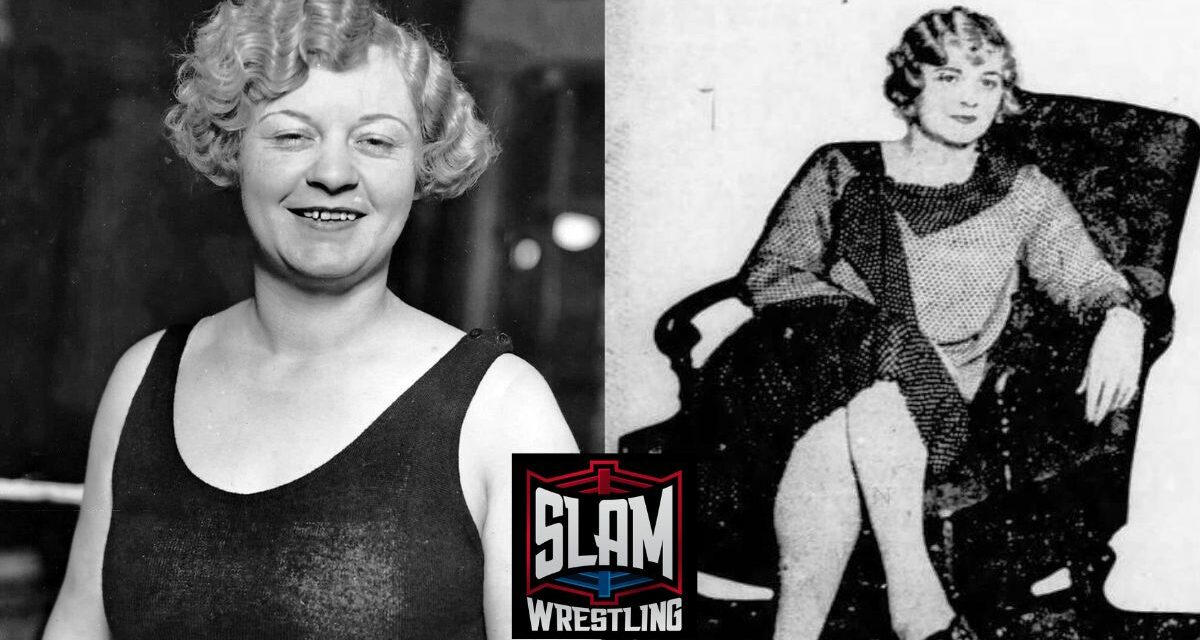

Very enjoyable read. Looking forward to part 2.